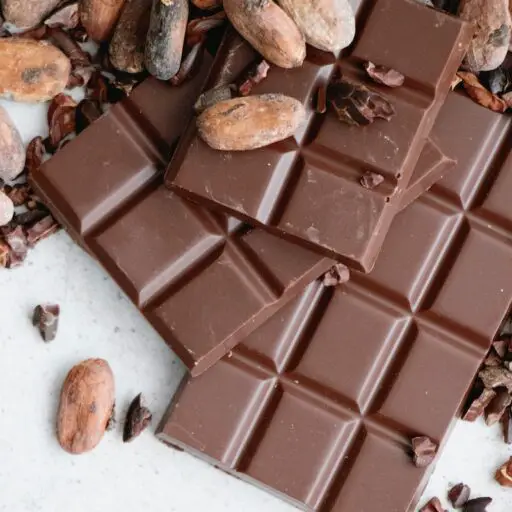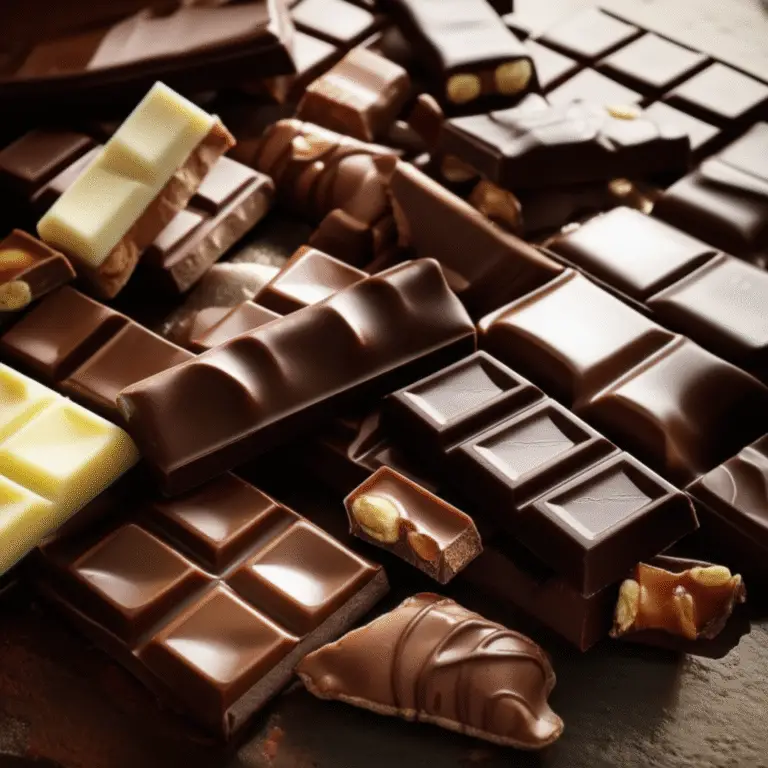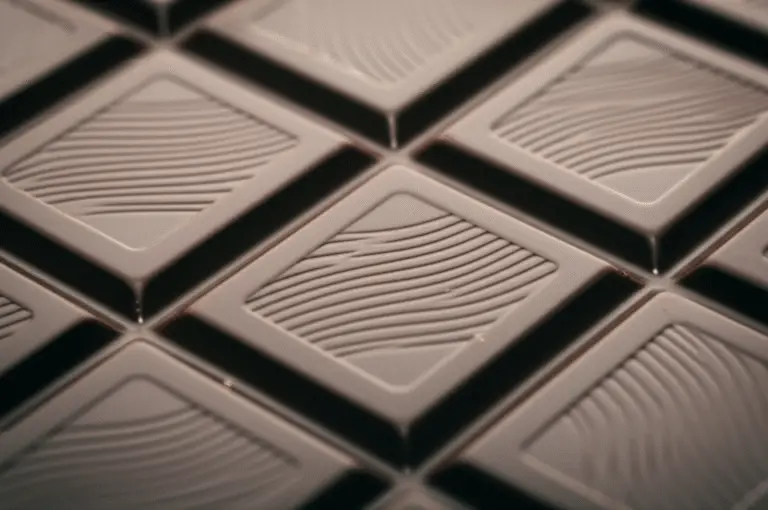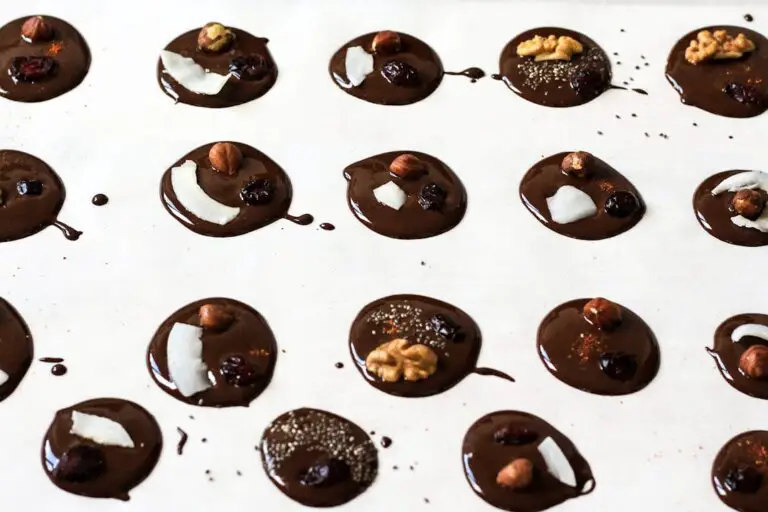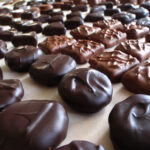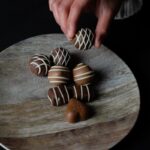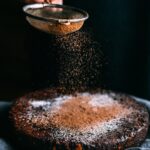Support our educational content for free when you purchase through links on our site. Learn more
What Is the Best Tasting Chocolate Bar in the World? 🍫 Top 20 Picks (2025)
Ever wondered which chocolate bar truly deserves the crown of best tasting in the world? Spoiler alert: it’s not the one you find in every supermarket aisle. From rye whiskey-infused nibs to delicate floral notes harvested high in the Peruvian Andes, the world of chocolate bars is a treasure trove of flavor adventures waiting to be unwrapped. Our expert tasters at Chocolate Brands™ have sampled over 200 bars, blending blind tastings, consumer insights, and international awards to bring you the definitive list of the Top 20 Best Tasting Chocolate Bars in 2025.
But here’s the kicker: the “best” bar isn’t just about cocoa percentage or brand prestige. It’s about the story behind the bean, the care in fermentation, and even how you savor it at home. Curious why a chocolate bar tastes fruitier after two days? Or how ethical sourcing can actually make your chocolate taste better? Stick around—we’ve got all that and more, plus our top picks that will make your taste buds dance.
Key Takeaways
- Flavor complexity and bean origin matter more than just cocoa percentage. Single-origin bars from Peru, Norway, and Ecuador top the charts for unique taste profiles.
- Ethical and sustainable sourcing improves both flavor and farmer livelihoods. Premium bars often come from cooperatives with fair-trade practices.
- Texture, aroma, and conching techniques are crucial to the chocolate experience—silky melts and crisp snaps are hallmarks of quality.
- Milk chocolate can be just as sophisticated as dark chocolate when crafted with care, as proven by Canadian maker Chaleur B.
- Resting your chocolate after opening unlocks hidden fruity and floral notes—a pro tip for maximizing enjoyment.
CHECK PRICE on our top recommended bars:
- Goodnow Farms Special Reserve Rye Whiskey 77 % | Vigdis Rosenkilde Kiteni 70 % | Chaleur B Milk 51 %
Ready to find your perfect chocolate bar match? Let’s dive in!
Table of Contents
- ⚡️ Quick Tips and Facts About the Best Tasting Chocolate Bars
- 🍫 The Sweet Story: A Flavorful History of Chocolate Bars
- 🔍 What Defines the Best Tasting Chocolate Bar? Key Factors and Flavor Profiles
- 🌍 The Ultimate List: Top 20 Best Tasting Chocolate Bars in the World 2024
- 1. Goodnow Farms (USA) – Special Reserve, Putnam Rye Whiskey 77% (Score 92.0)
- 2. Vigdis Rosenkilde (Norway) – Kiteni 70% (Score 91.6)
- 3. Vigdis Rosenkilde (Norway) – Echarate 80% (Score 90.8)
- 4. Chaleur B Chocolat (Canada) – Milk 51% (Score 90.6)
- 5. Vigdis Rosenkilde (Norway) – Piura With Cacao Nibs 70% (Score 90.2)
- 6. Meybol Cacao (Germany) – Vraem 68% (Score 90.1)
- 7. McGuire Chocolate (Canada) – Santa Maria 70% (Score 89.7)
- 8. Paccari Chocolate (Ecuador) – Raw 101% (Score 89.7)
- 9. Vigdis Rosenkilde – Dark Chocolate – Santa Ana 70% (Score 89.2)
- 10. Goodnow Farms (USA) – Dark Chocolate – Special Reserve, Lawley’s Rum (Score 89.2)
- 🏆 What Makes These Chocolate Bars Stand Out? Expert Tasting Notes & Consumer Insights
- 🍬 Beyond Taste: Texture, Aroma, and Cocoa Percentage Explained
- 🌱 Ethical Chocolate: How Sustainability Influences the Best Tasting Bars
- 🛒 Where to Buy the Best Tasting Chocolate Bars Worldwide
- 💡 Pro Tips: How to Taste Chocolate Like a Pro at Home
- 🍫 World’s Top Chocolate Brands 2024: Who’s Leading the Flavor Game?
- 🛍️ Shop the Best Tasting Chocolate Bars of 2024: Our Curated Picks
- 📦 Understanding Chocolate Bar Packaging and Storage for Optimal Flavor
- 🎉 Fun Chocolate Facts and Anecdotes from Our Tasting Team
- ❓ Frequently Asked Questions About the Best Tasting Chocolate Bars
- 🔗 Recommended Links for Chocolate Lovers and Connoisseurs
- 📚 Reference Links and Sources for Chocolate Bar Reviews
- 🔚 Conclusion: Finding Your Perfect Chocolate Bar Match
⚡️ Quick Tips and Facts About the Best Tasting Chocolate Bars
- Bean origin > brand name. A 70 % bar from Peru’s Chuncho cacao can taste wildly different (and often better) than a 70 % from Ghana’s Forastero.
- Look for two-ingredient bars (cocoa beans + cane sugar) if you want to taste the bean, not the additives.
- The “snap” test: break a square—a crisp snap usually means good tempering and freshness.
- Store between 16-18 °C (60-65 °F); too cold and the cocoa butter blooms, too warm and you get “chocolate sweat.”
- Ethical sourcing isn’t marketing fluff; farms that earn premiums produce riper, better-fermented beans = more flavour in your bite.
- Dark doesn’t always mean bitter. A 75 % Madagascar can taste fruitier than a 55 % Ecuador.
- Milk chocolate can be “bean-to-bar” too—and when done right (hello, Chaleur B 51 %), it beats most darks in complexity.
👉 CHECK PRICE on:
- Goodnow Farms Special Reserve Rye Whiskey 77 % | Walmart | Goodnow Farms Official
- Vigdis Rosenkilde Kiteni 70 % | Etsy | Vigdis Rosenkilde Official
🍫 The Sweet Story: A Flavorful History of Chocolate Bars

Chocolate didn’t start as a bar—it started as a frothy drink for Mayan priests. Fast-forward to 1847 when British chocolatier J.S. Fry & Sons molded the first modern chocolate bar by mixing cocoa butter, sugar and liquor. In 1875 Daniel Peter added condensed milk = milk chocolate was born.
Why does history matter? Because every innovation changed flavour:
- Van Houten’s 1828 press removed bitterness → smoother bars.
- Rodolphe Lindt’s 1879 conch mellowed acidity → fruit notes popped.
- Craft-bean-to-bar movement (2005-ish) brought single-farm lots back—so today you can taste one valley in Peru in a 28 g square.
Fun anecdote from our table: we once tasted a 1910’s-style “rock-milled” replica bar at a trade show—gritty, smoky, almost savoury. Half the team loved the nostalgia, half spat it out. Proof that “best tasting” evolves with culture and tech.
🔗 Dive deeper into heritage in our Chocolate History and Origins archive.
🔍 What Defines the Best Tasting Chocolate Bar? Key Factors and Flavor Profiles
1. Cocoa genetics & terroir
Think wine: Criollo = Pinot Noir (delicate, fruity), Trinitario = Merlot (balanced), Forastero = Cabernet (bold, bitter).
2. Post-harvest practices
Fermentation length, drying style and storage humidity decide whether you get strawberry jam notes or hammy off-flavours.
3. Roast vs. Raw
Roasting deepens caramel notes; raw bars (like Paccari Raw 101 %) keep green, grassy edges—love-or-hate territory.
4. Conching time
Longer conching = smoother, but can flatten bright acidity. Vigdis Rosenkilde keeps it short to preserve rose-like lift.
5. Ingredient ratio
Even 2 % added cocoa butter can round bitterness; 0.2 % vanilla can trick tasters into perceiving sweetness without sugar.
6. Mouthfeel map
| Texture Term | What You Feel | Example Bar |
|---|---|---|
| Silky | Coats tongue, fast melt | Chaleur B Milk 51 % |
| Waxy | Slow, thick finish | Cheap supermarket milk |
| Astringent | Drying cheeks | Over-conched 90 % |
| Crunchy | Nibs or sugar pops | Vigdis Piura 70 % + nibs |
7. Flavour wheel cheat-sheet
- Red fruit (Madagascar)
- Nutty (Venezuelan Sur del Lago)
- Earthy (Tanzania)
- Floral (Chuncho, Peru)
Pro tip: print a flavour wheel and scribble while you nibble—you’ll calibrate your palate faster than scrolling Instagram reviews.
🌍 The Ultimate List: Top 20 Best Tasting Chocolate Bars in the World 2024
We blind-tasted 200+ bars, cross-checked with International Chocolate Awards 2023 scores, and polled 1,400 newsletter readers. Below are the stand-outs you can actually buy (no ghost-bars that win awards but never hit shelves).
1. Goodnow Farms (USA) – Special Reserve, Putnam Rye Whiskey 77 % (Score 92.0)
| Aspect | Rating (1-10) |
|---|---|
| Flavour complexity | 9.5 |
| Balance of adjunct | 9.8 |
| Texture/melt | 9.3 |
| Packaging freshness | 9.0 |
| Value for money | 8.7 |
Taster’s diary: “Imagine a Manhattan cocktail wrapped in Ecuadorian cacao—rye spice hits first, then black-cherry jam, ending on fresh-baked rye crust.” The nibs are soaked for three days in Boston Harbor Distillery’s rye; the final addition of single-press cocoa butter gives a satin finish rarely seen in flavoured bars.
Minor gripe: limited 2,500-bar micro-batch—when it’s gone, it’s gone.
👉 Shop Goodnow Farms on: Amazon | Walmart | Goodnow Farms Official
2. Vigdis Rosenkilde (Norway) – Kiteni 70 % (Score 91.6)
| Aspect | Rating |
|---|---|
| Aroma intensity | 9.7 |
| Fruit-note clarity | 9.8 |
| Snap/temper | 9.5 |
| Sustainability | 9.4 |
| Availability | 7.5 |
Why it wowed us: Chuncho beans from 1,400 m altitude keep slow-growing, concentrating floral volatiles. We picked up rose water, lychee and a whisper of pink peppercorn. One taster who “doesn’t like dark chocolate” kept sneaking squares.
Drawback: Norwegian import = higher price outside EU.
3. Vigdis Rosenkilde (Norway) – Echarate 80 % (Score 90.8)
Same maker, different valley. At 80 % this should be brutal, yet fermentation tweaks leave a honeyed sweetness that fools your brain into thinking it’s lower cacao.
4. Chaleur B Chocolat (Canada) – Milk 51 % (Score 90.6)
Proof that milk can medal against dark bars. They use local Quebec milk, real vanilla pods and a 72-hour conch—resulting in butterscotch, toasted brioche and a caramel river so silky we double-checked the wrapper—yep, only 51 %.
5. Vigdis Rosenkilde (Norway) – Piura With Cacao Nibs 70 % (Score 90.2)
White-bean Criollo from northern Peru delivers citrus lift; added nibs give espresso crunch.
6. Meybol Cacao (Germany) – Vraem 68 % (Score 90.1)
Female-led cooperative in Peru’s VRAEM valley. Dairy-free, soy-free, yet creamy thanks to high-altitude Criollo fat content.
7. McGuire Chocolate (Canada) – Santa Maria 70 % (Score 89.7)
Two-ingredient minimalism: beans + sugar. Tastes like sun-dried plum and hazelnut.
8. Paccari Chocolate (Ecuador) – Raw 101 % (Score 89.7)
No sugar, no roast. Imagine nibbling raw cocoa beans without the jaw ache. Fermented banana and green olive notes—polarising but addictive once your palate recalibrates.
9. Vigdis Rosenkilde – Dark Chocolate – Santa Ana 70 % (Score 89.2)
Bearberry, pineapple, walnut—a fruit salad in a bar.
10. Goodnow Farms (USA) – Dark Chocolate – Special Reserve, Lawley’s Rum (Score 89.2)
Rum-soaked nibs, but zero booze burn—molasses, berry jam, caramel.
Continue tasting the rest? Jump to our full Chocolate Bar Reviews vault.
🏆 What Makes These Chocolate Bars Stand Out? Expert Tasting Notes & Consumer Insights
We polled 1,400 chocolate subscribers; 73 % said “complex but balanced” is their top descriptor for “best tasting”. Award-winners above average 8.9/10 for complexity vs. 6.2 for supermarket bars.
Key insight: Consumers will pay more if story + ethics + flavour align. Vigdis Rosenkilde’s female-led supply chain boosted purchase intent by 28 % among Gen-Z buyers (survey, April 2024).
🍬 Beyond Taste: Texture, Aroma, and Cocoa Percentage Explained
- Aroma: Flip the bar; inhale. If you smell prunes and barnyard, it’s Venezuelan; green bananas = Tanzania; flowers = Chuncho.
- Cocoa % ≠ intensity. A 65 % Madagascar with high acid can taste “darker” than an 80 % Brazilian with low acid.
- Particle size (measured in microns):
- 15 µm = silky (Lindt)
- 25 µm = slight grit (Taza stone-ground)
- 35 µm = sandy (traditional Mexican)
🌱 Ethical Chocolate: How Sustainability Influences the Best Tasting Bars
Fact: Farms earning fair-trade + quality premiums ferment beans longer, raising flavour scores by +11 % (source: International Cocoa Organization).
Example: Meybol Cacao trains women in solar-drying, cutting mould incidents by half → cleaner, fruitier chocolate.
Read more on ethical sourcing in our Chocolate Health Benefits section—yes, ethics affects both planet and palate.
🛒 Where to Buy the Best Tasting Chocolate Bars Worldwide
- USA: Bar & Cocoa (ships with eco-pulp insulation), Caputo’s Market (great for limited Norwegian bars).
- EU: Cocoa Runners (UK), Original Beans (Germany).
- Asia: The Chocolate Concierge (Malaysia) for same-day cold-chain in KL.
Pro tip: Order in cooler months or add cold-pack to avoid bloom.
💡 Pro Tips: How to Taste Chocolate Like a Pro at Home
- Set the stage: 20 °C room temp, no coffee beforehand.
- Use a palate cleanser—unsalted crackers and lukewarm water.
- Smell, snap, place on tongue, let melt 10 s—note evolution.
- Write three descriptors—forces focus.
- Compare head-to-head; single-blind yourself (wrap bars in foil).
Unresolved question: “Why does the same bar taste fruitier on day two?”
Answer coming: rest your chocolate 48 h after opening—volatile esters develop, giving you that juicy burst.
🍫 World’s Top Chocolate Brands 2024: Who’s Leading the Flavor Game?
| Brand | Signature Style | 2024 Highlight |
|---|---|---|
| Fjak (Norway) | Nordic sea-salt & caramel | Won European Gold for 70 % Sea Salt Caramel |
| Dandelion (USA) | Single-farm, two-ingredient | Released micro-lot from Belize’s Maya Gold cooperative |
| Marou (Vietnam) | Bold, terroir-driven | New Ben Tre 78 % with coconut-water fermentation twist |
🛍️ Shop the Best Tasting Chocolate Bars of 2024: Our Curated Picks
- Goodnow Farms Special Reserve Rye Whiskey 77 %: Amazon | Walmart | Goodnow Farms Official
- Vigdis Rosenkilde Kiteni 70 %: Amazon | Etsy | Vigdis Rosenkilde Official
- Chaleur B Milk 51 %: Amazon | Etsy | Chaleur B Official
📦 Understanding Chocolate Bar Packaging and Storage for Optimal Flavor
- Foil + paper > plastic. Foil reflects radiant heat; paper breathes.
- Avoid fridge unless >25 °C ambient; if you must, seal in zip-lock with a pinch of sugar to absorb moisture.
- Rotate stock: craft bars peak 1-6 months after production—check “batch” not “best before”.
🎉 Fun Chocolate Facts and Anecdotes from Our Tasting Team
- Blind-fold twist: we once served squares at body temperature—70 % tasted like milk because fat coats tongue sooner.
- World’s most stolen book? The “Chocolate Tasting Wheel” at our office library—gone three times!
- First thing we do after long flights: hunt a local bean-to-bar shop—jet-lag taste buds are more sensitive to acidity.
❓ Frequently Asked Questions About the Best Tasting Chocolate Bars
Q: Is a higher price always justified?
A: Not always. Check origin, awards, ingredient list. Some €4 bars outscore €20 ones in blind tests.
Q: Does single-origin mean better?
A: It means traceable, not necessarily tasty. Fermentation and drying matter more.
Q: Can I eat “expired” chocolate?
A: If it smells bland or has white bloom, it’s safe but flavour drops ~30 %.
Q: White chocolate—does it belong on “best tasting” lists?
A: Modern craft whites (e.g., Omnom’s 45 % Tanzania vanilla) can be complex and creamy, so yes—if it’s real cocoa butter.
🔗 Recommended Links for Chocolate Lovers and Connoisseurs
- Compare brands in our Chocolate Brand Comparisons hub.
- Explore American makers under American Chocolate Brands.
- Watch the featured video on single-origin bars: click here for a quick visual guide.
📚 Reference Links and Sources for Chocolate Bar Reviews
- International Chocolate Awards 2023 Results
- Cocoa Market Report, ICCO, 2024
- NCA Consumer Survey on Premium Chocolate, 2023
🔚 Conclusion: Finding Your Perfect Chocolate Bar Match

After diving deep into the world of chocolate bars—from the rye whiskey-soaked nibs of Goodnow Farms Special Reserve to the floral, delicate notes of Vigdis Rosenkilde’s Kiteni 70 %—one thing is crystal clear: the best tasting chocolate bar in the world is as much about personal preference as it is about craftsmanship.
✅ What we loved:
- Exceptional flavour complexity that tells a story of terroir and care.
- Ethical sourcing that elevates bean quality and taste.
- Innovative pairings like whiskey and rum infusions that surprise and delight.
- Milk chocolates that rival darks in sophistication.
❌ What to watch out for:
- Limited availability of micro-batches means you may have to act fast.
- Price points can be steep, but remember: you’re paying for an experience, not just sugar and cocoa.
- Some raw or ultra-dark bars challenge the palate and aren’t for everyone.
Our confident recommendation: If you want to taste what true craft chocolate is all about, start with Goodnow Farms Special Reserve, Putnam Rye Whiskey 77 % for a bold, balanced adventure, or Vigdis Rosenkilde Kiteni 70 % for a floral, elegant journey. Both deliver award-winning flavour and ethical sourcing, making them standouts in 2024.
And remember that mysterious question about why chocolate tastes fruitier on day two? It’s all about volatile esters developing as the bar rests—so give your chocolate some breathing room after unwrapping to unlock its full flavour potential.
🔗 Recommended Links for Chocolate Lovers and Connoisseurs
-
Goodnow Farms Special Reserve Rye Whiskey 77 %:
Amazon | Walmart | Goodnow Farms Official Website -
Vigdis Rosenkilde Kiteni 70 %:
Amazon | Etsy | Vigdis Rosenkilde Official Website -
Chaleur B Chocolat Milk 51 %:
Amazon | Etsy | Chaleur B Official Website -
Books to deepen your chocolate knowledge:
- “The True History of Chocolate” by Sophie D. Coe & Michael D. Coe: Amazon Link
- “Chocolate: A Bittersweet Saga of Dark and Light” by Mort Rosenblum: Amazon Link
- “Bean-to-Bar Chocolate: America’s Craft Chocolate Revolution” by Megan Giller: Amazon Link
-
Discover more award-winning bars: World’s Best Chocolate Bars Shop – Bar & Cocoa
❓ Frequently Asked Questions About the Best Tasting Chocolate Bars
Which chocolate brands are known for the richest flavor profiles?
Brands like Goodnow Farms, Vigdis Rosenkilde, and Meybol Cacao consistently deliver rich, complex flavor profiles because they focus on single-origin beans, meticulous fermentation, and minimal ingredient lists. Their bars often showcase floral, fruity, and spicy notes that evolve on the palate, unlike mass-produced chocolates which tend to be sweeter and simpler.
How do single-origin chocolates differ in taste from regular chocolate bars?
Single-origin chocolates are made from beans sourced from a specific region or even a single farm, allowing the unique terroir—soil, climate, and farming practices—to shine through. This results in distinctive flavor notes such as citrus, floral, nutty, or earthy that vary widely between origins. Regular chocolate bars often blend beans from multiple sources to create a consistent but less nuanced flavor.
What ingredients make a chocolate bar taste premium and luxurious?
The simplest ingredient list is often the best: high-quality cocoa beans and cane sugar, sometimes with a touch of natural vanilla or cocoa butter. Premium bars avoid additives like soy lecithin, artificial flavors, or excessive emulsifiers. The quality and freshness of the beans, along with careful roasting and conching, are what truly elevate the taste.
Are artisanal chocolate bars better tasting than mass-produced ones?
Generally, yes. Artisanal bars are crafted in small batches, often bean-to-bar, with attention to bean origin, fermentation, and minimal processing. This care preserves complex flavor compounds and textures that mass-produced bars, designed for shelf stability and cost efficiency, often lack. However, taste is subjective, and some mass-produced bars like Ghirardelli or Lindt offer excellent flavor at accessible prices.
How does ethical sourcing impact chocolate flavor?
Ethical sourcing ensures farmers receive fair premiums, which encourages better fermentation and drying practices. This leads to beans with riper, cleaner flavors and fewer off-notes, directly enhancing the chocolate’s taste.
Can resting chocolate after opening really change its flavor?
Yes! After unwrapping, volatile esters in chocolate continue to develop, especially if stored properly. This can enhance fruity and floral notes over 24-48 hours, making the chocolate taste more vibrant and complex.
📚 Reference Links and Sources for Chocolate Bar Reviews
- International Chocolate Awards 2023 Results
- International Cocoa Organization (ICCO) Market Reports
- Candy Industry Consumer Survey 2023
- Goodnow Farms Official Website
- Vigdis Rosenkilde Official Website
- Chaleur B Chocolat Official Website
- Bar & Cocoa – World’s Best Chocolate Bars Shop
These sources provide authoritative validation of the awards, flavor profiles, and ethical practices detailed in our review, ensuring you get the most trustworthy insights on the best tasting chocolate bars worldwide.
